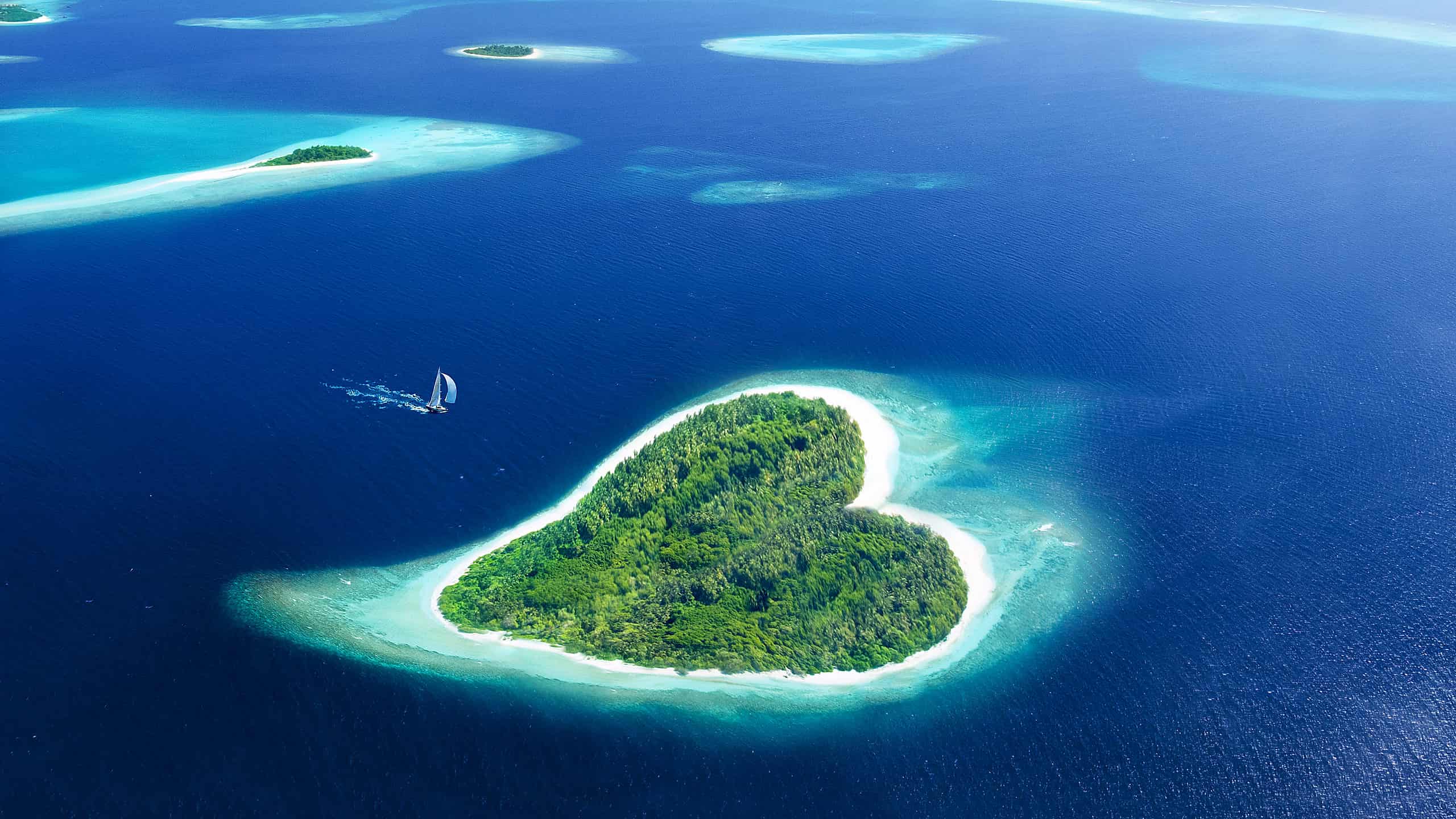Most people don’t usually have to worry about the elevation of their country. For others, it’s a matter of life and death. Most of the countries with the lowest average elevation on our list struggle to deal with rising sea levels, dangerous natural disasters, and more.
Why care about countries with the lowest average elevation?
Unsurprisingly, most of the countries with the lowest average elevation are islands. These countries are naturally very susceptible to natural disasters like tsunamis and other storms. Climate change, however, has begun to threaten the very existence of some of these countries. If the sea levels were to continue to rise, millions of people would be forced to abandon their homes! Other countries in desert areas will experience higher, deadlier temperatures, and countries on the coast will suffer bigger waves and more intense flooding. Here are the 11 countries with the lowest average elevation in the world.
Republic of Maldives – 1.5 meters
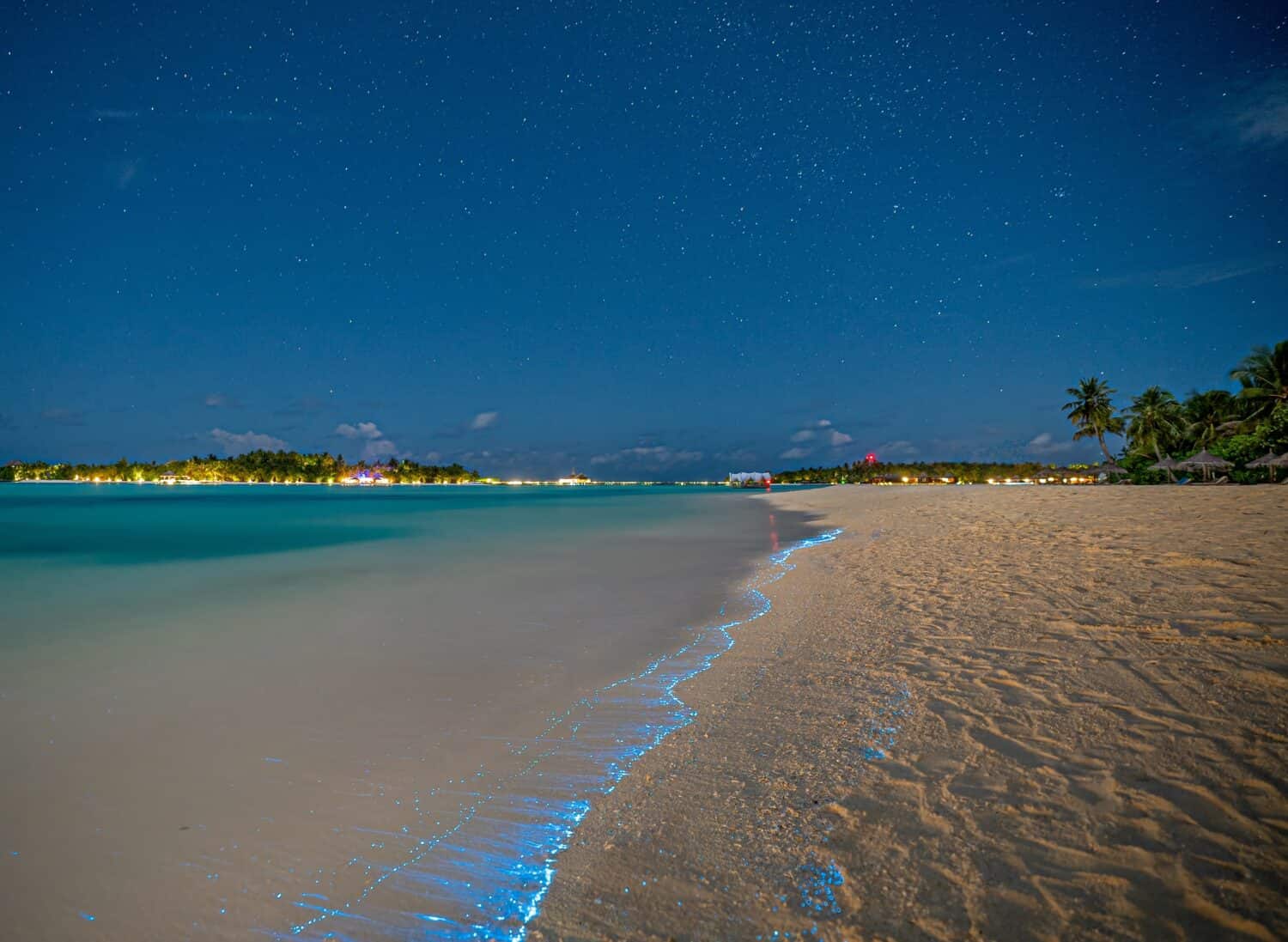
The Sea of Stars in Maldives features a glow thanks to bioluminescent plankton.
©nabyh/Shutterstock.com
A famous destination for influencers and lifestyle bloggers, the Maldives is a country in crisis. The Maldives is the smallest country in Asia made up of 26 tiny atolls including 1,192 coral islands. They rely primarily on fishing and tourism for their economy.
In 1988, the Maldives announced that they expected rising sea levels to completely cover the country in 30 years. While this prediction might have been too ambitious, it does highlight how seriously these countries take the issue of climate change. In 2007, the Intergovernmental Panel on Climate Change said that sea levels could rise up to 59 centimeters by the year 2100. This means that most of the islands in the Maldives would have to be abandoned. The country began to look for land to buy on mainland India to prepare for this eventual migration.
You might think that building things like seawalls or barriers would help, but these structures actually make the problem worse. Natural ocean currents carry sediment and deposit it on the existing islands, helping them grow and resist (at natural levels) the rise of the sea. Seawalls prevent this accumulation of sediment, so the islands no longer grow, making them more susceptible to any rise.
Tuvalu – 1.8 meters

A typical Tuvalu island. Funafuti atoll, Tuvalu.
©Dmitry Malov/iStock via Getty Images
Tuvalu is located about halfway between Australia and Hawaii. Tuvalu is made up of three reef islands and six island atolls. Because the islands are mostly sand and rock, they have to rely on fishing and imports to survive.
According to some experts, a rise in sea levels of 20–40 centimeters would make the entire country of Tuvalu uninhabitable. Locals have reported seeing signs of rising sea levels already. They say they have seen water bubbling up through rocks where it hasn’t been before, and recent flooding of low areas. Tuvalu has joined other neighboring island nations in calling for the transition away from fossil fuels.
Republic of Kiribati – 2 meters
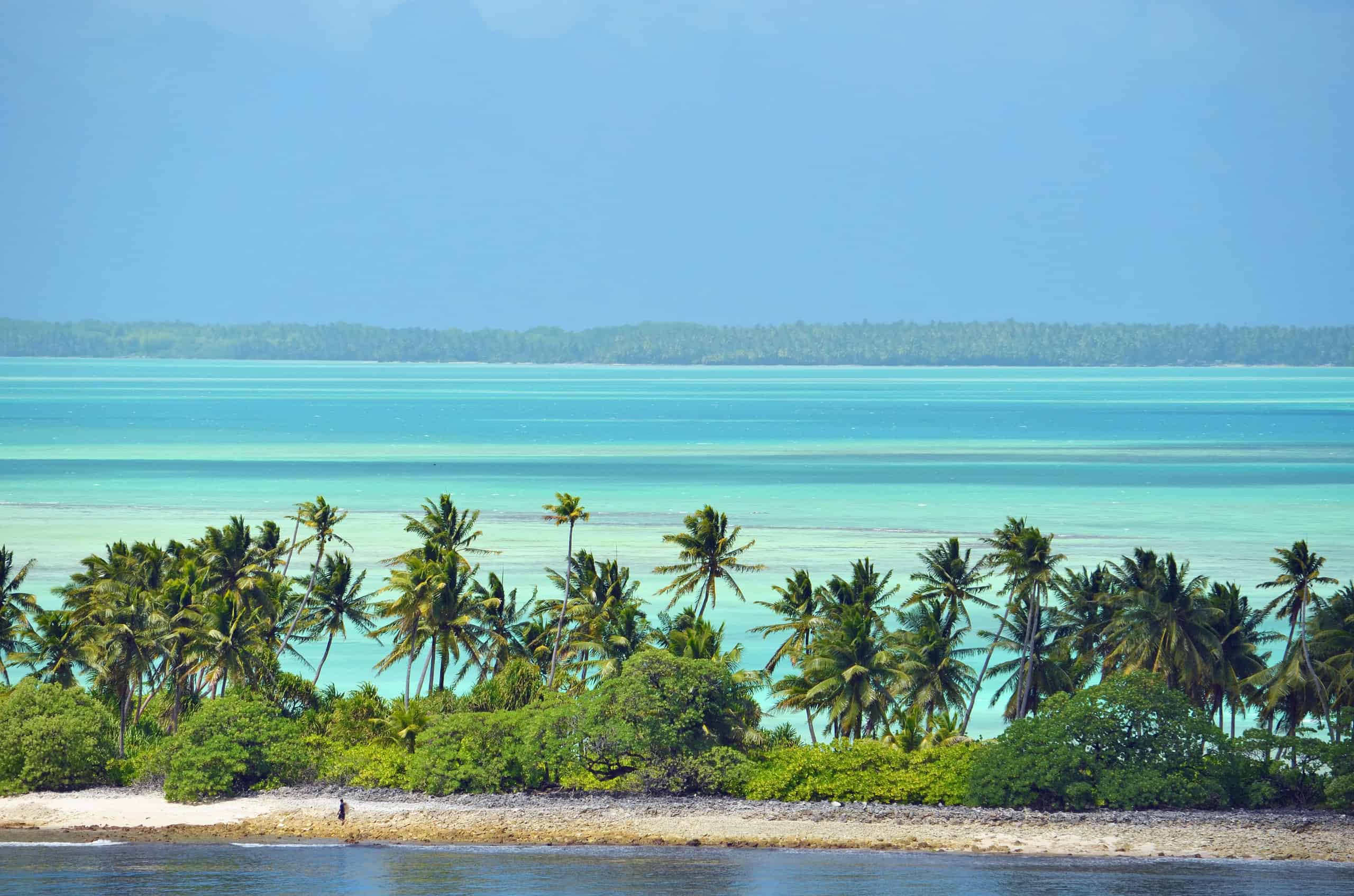
Fanning Island, also known as Tabuaeran, is one of the islands of the Republic of Kiribati. This island is named after American captain Edmund Fanning who saw the atoll on June 11, 1798.
©iStock.com/EvaKaufman
Kiribati (pronounced Kiri-bass) is composed of 32 atolls and one reef island. It gained its independence from Great Britain and the United States in 1979. As a result, is one of the least-developed countries in the world. It now relies heavily on international aid to survive.
Due to rising sea levels, experts in Kiribati predict that most of the nation’s arable land will be poisoned by salt water within a hundred years, making it unusable for agriculture. Kiribati has struggled to survive due to colonization, nuclear weapons testing on its islands by the United States, and now climate change.
Republic of the Marshall Islands – 2 meters

The coastline of one of the main islands of the Marshal Islands.
©KKKvintage/Shutterstock.com
The third country on our list of countries with the lowest average elevation is also in the Pacific Ocean and a collection of 29 atolls and 5 larger islands is the Marshall Islands. The United States controlled the islands after World War II and conducted 67 nuclear weapons tests on them. Like Kiribati, the Marshall Islands gained independence in 1979. They now rely heavily on international aid, fishing, and agriculture to survive.
The Marshall Islands is in an area particularly susceptible to typhoons. Climate change has increased the frequency and intensity of these storms, causing an increase in damage and loss of life. If the sea levels in the Pacific were to rise just one meter, 37%–50% of all buildings would become permanently flooded.
To help combat climate change and mitigate the damage from natural disasters, the Marshall Islands have pledged to reduce their carbon emissions by 58% percent by 2035. They plan to reach net zero emissions by 2050.
Republic of Singapore – 15 meters
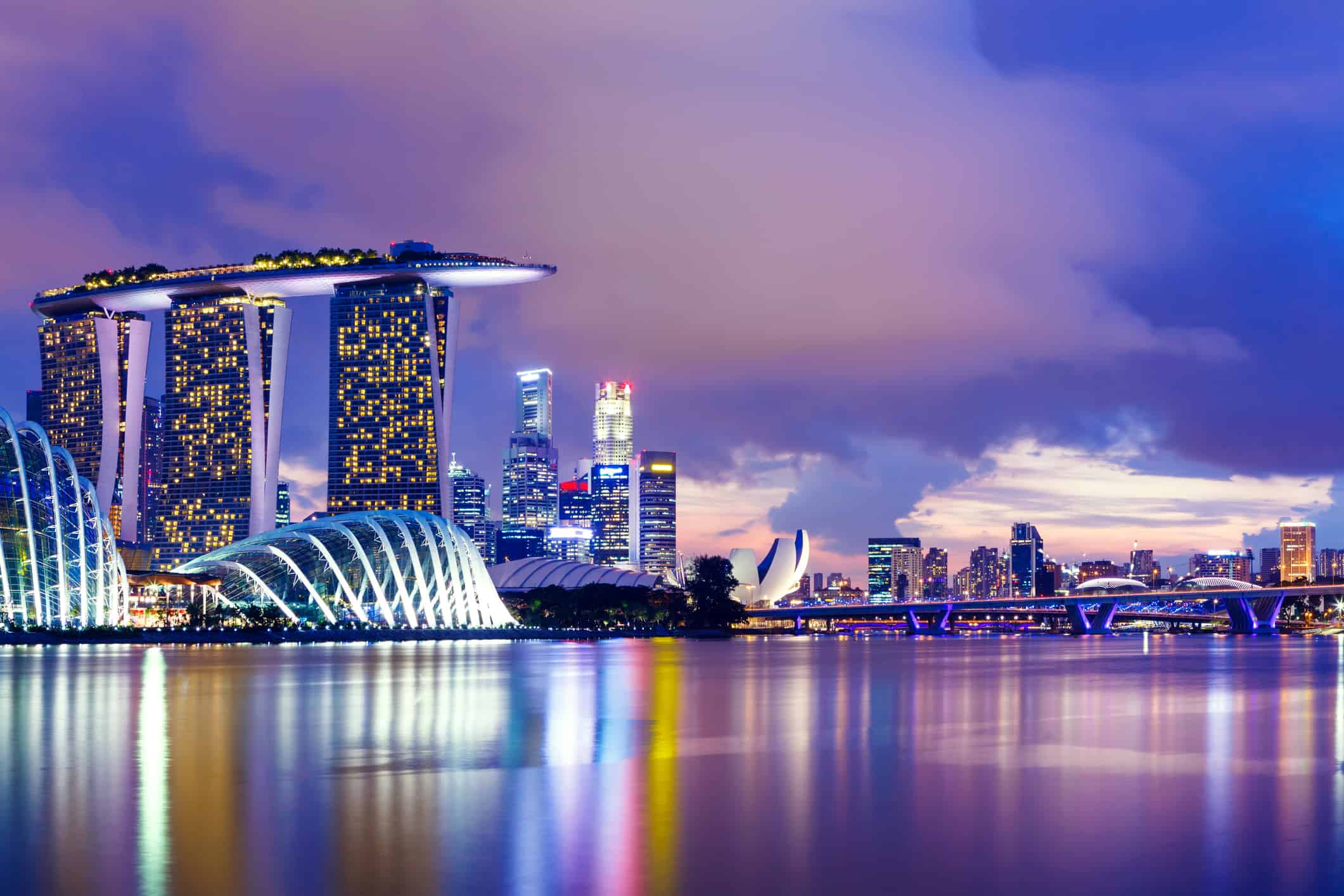
Singapore is famous for its cleanliness and opulent style.
©leungchopan/ via Getty Images
With Singapore, we finally reach the double digits in elevation! This tiny nation consists of a single island and is one of the Four Asian Tigers due to its immense GDP and powerful economy. Singapore is the second-most densely populated country in the world. So, the risk of destruction or loss of life due to climate change is very real.
In fact, Singapore is already planning to spend at least $100 billion over the next century to help protect itself from the effects of climate change and rising sea levels. It has already spent $5 billion on a coastline and flood protection project and was the first Southeast Asian country to pass a carbon tax on its largest polluters.
Singapore recently began migrating away from fossil fuels toward solar power by installing panels on many of its buildings. They even built one of the world’s largest floating solar farms.
State of Qatar – 28 meters
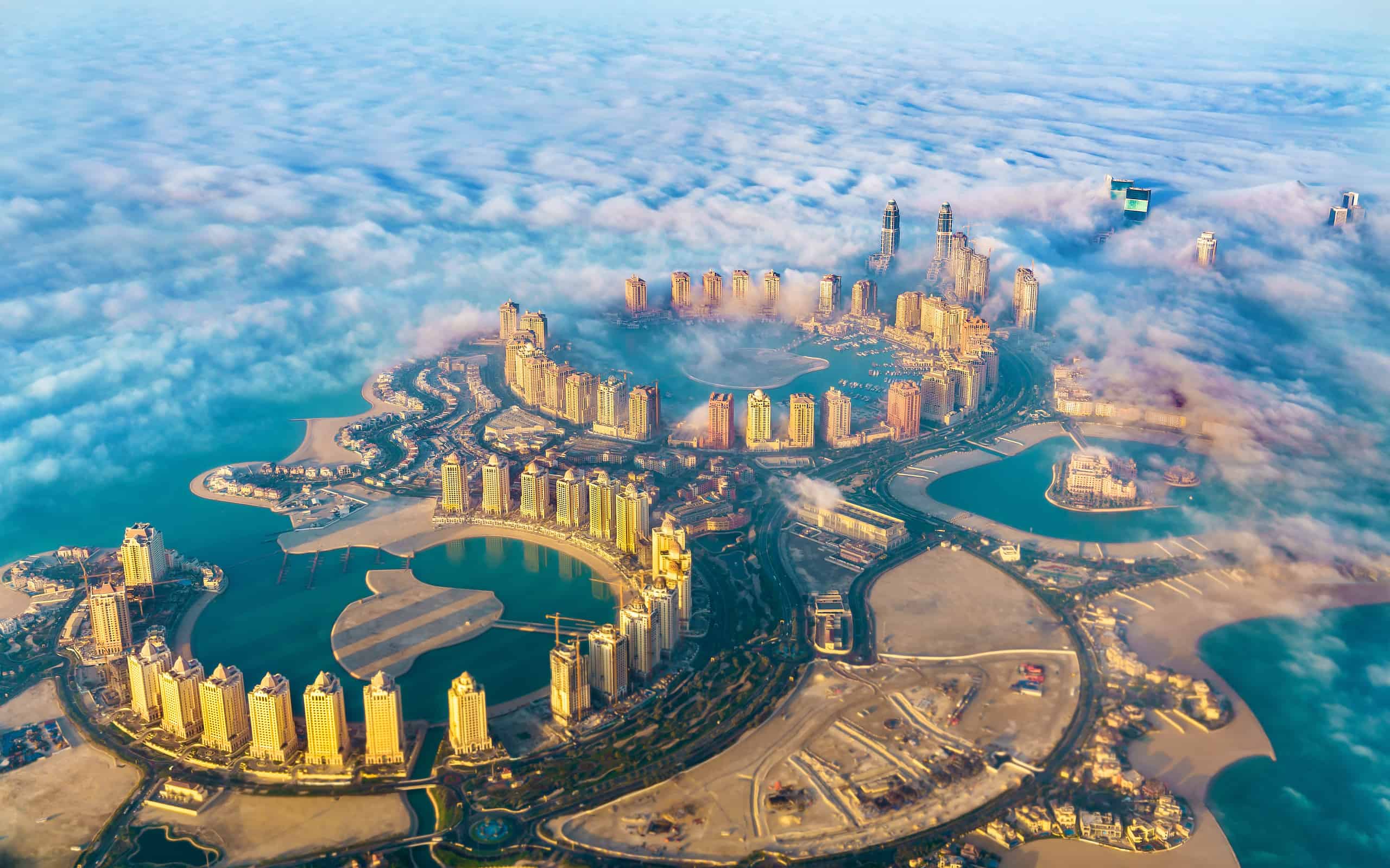
The Pearl Island in Doha, Qatar, is a man-made island.
©Leonid Andronov/iStock via Getty Images
Located in the Middle East at the Eastern edge of the Arabian Peninsula and with an average elevation of 28 meters, Qatar isn’t at any immediate risk of sinking into the ocean.
Qatar is a small, flat desert country and shares only one border with another country, Saudi Arabia. Despite this, Qatar has become a phenomenally successful country. It has grown economically ever since it gained its independence from Great Britain in 1971. Qatar is ruled by a hereditary monarch and has the fourth-highest GDP per capita in the world, mostly due to natural gas exports.
The Netherlands – 30 meters
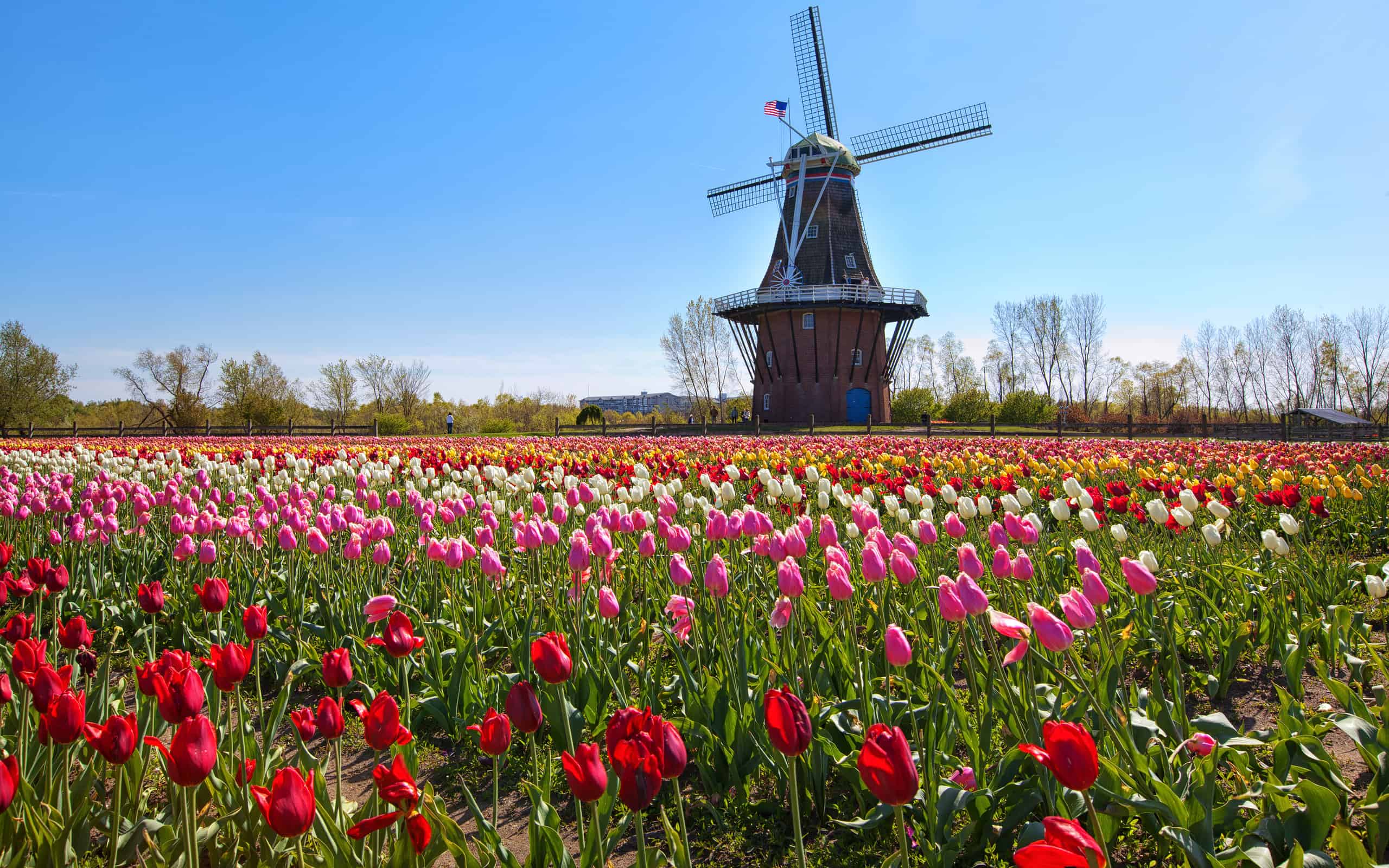
An authentic wooden windmill in Holland Michigan, Netherlands.
©csterken/ via Getty Images
The Netherlands borders Germany and Belgium, but since it has overseas territories in the Caribbean next to French islands, it also technically shares a border with France.
The Netherlands definitely earned its spot on this list because its name literally means “lower countries”, highlighting its generally low elevation. In fact, over 26% of the country is actually below sea level. Most of this lowland was actually covered by the ocean before the 14th century when they began to reclaim the land through large public works that continue to this day.
Starting in 1958, the Netherlands began to construct the Delta Works. This is a system of interconnected dikes, canals, and water containment systems. It is designed to reduce the risk of flooding. It is considered to be one of the Seven Wonders of the modern world by the American Society of Civil Engineers.
Denmark – 31 meters
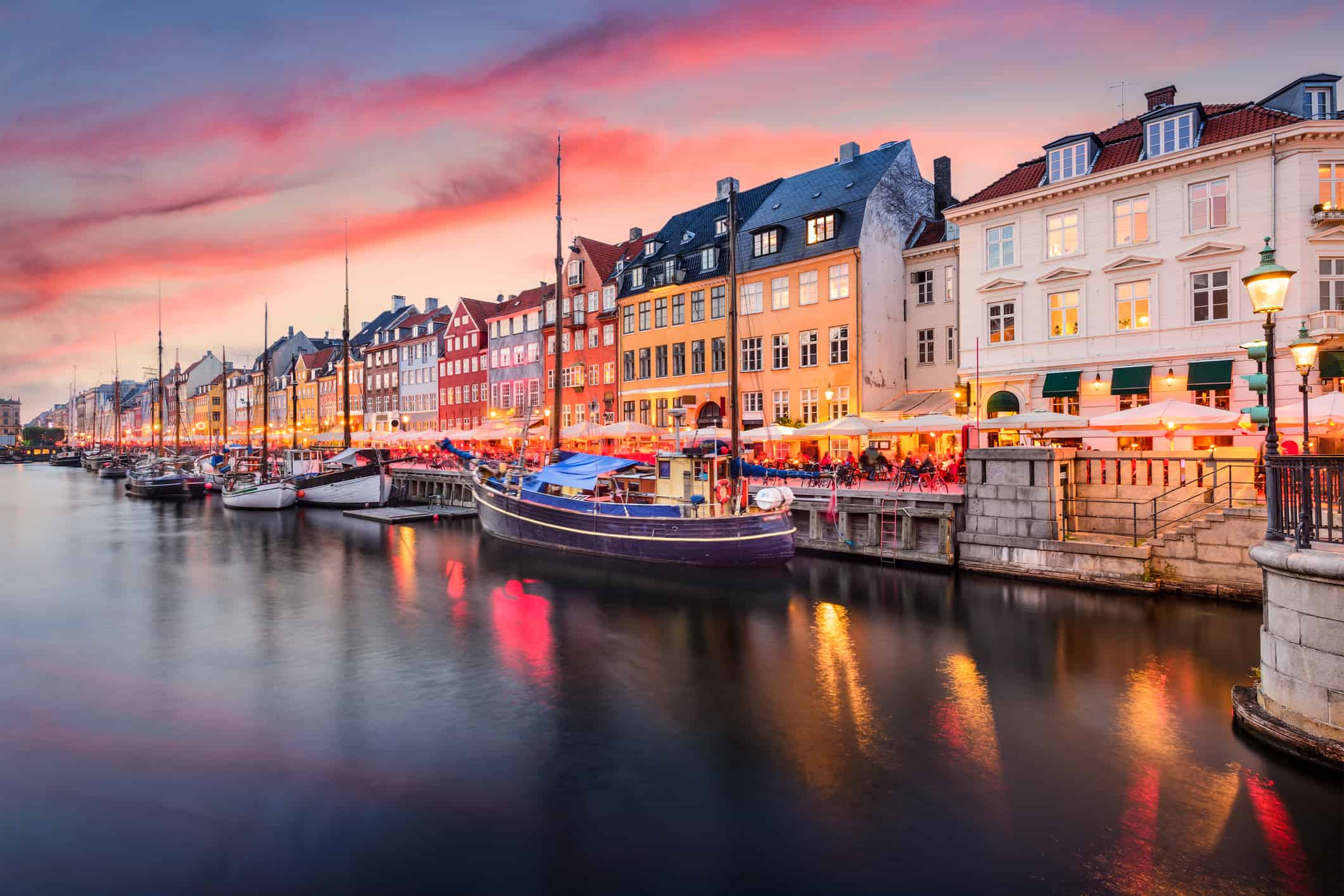
The Nyhavn Canal is a waterfront in Copenhagen, Denmark. King Christian V of Denmark ordered the canal’s construction in the late 17th century.
©SeanPavonePhoto/ via Getty Images
Denmark is actually the largest and most populous member country of the Kingdom of Denmark, or the Danish Realm. This Nordic country stands unique amongst its Scandinavian neighbors who boast tall mountains and steep elevations. Most of Denmark is covered by low hills and farmland, which explains why Vikings found it so attractive! In fact, there is no point in Denmark that is further than 52 km away from the ocean.
Despite this and its low elevation, experts do not consider Denmark at risk from ocean flooding.
Republic of The Gambia – 34 meters
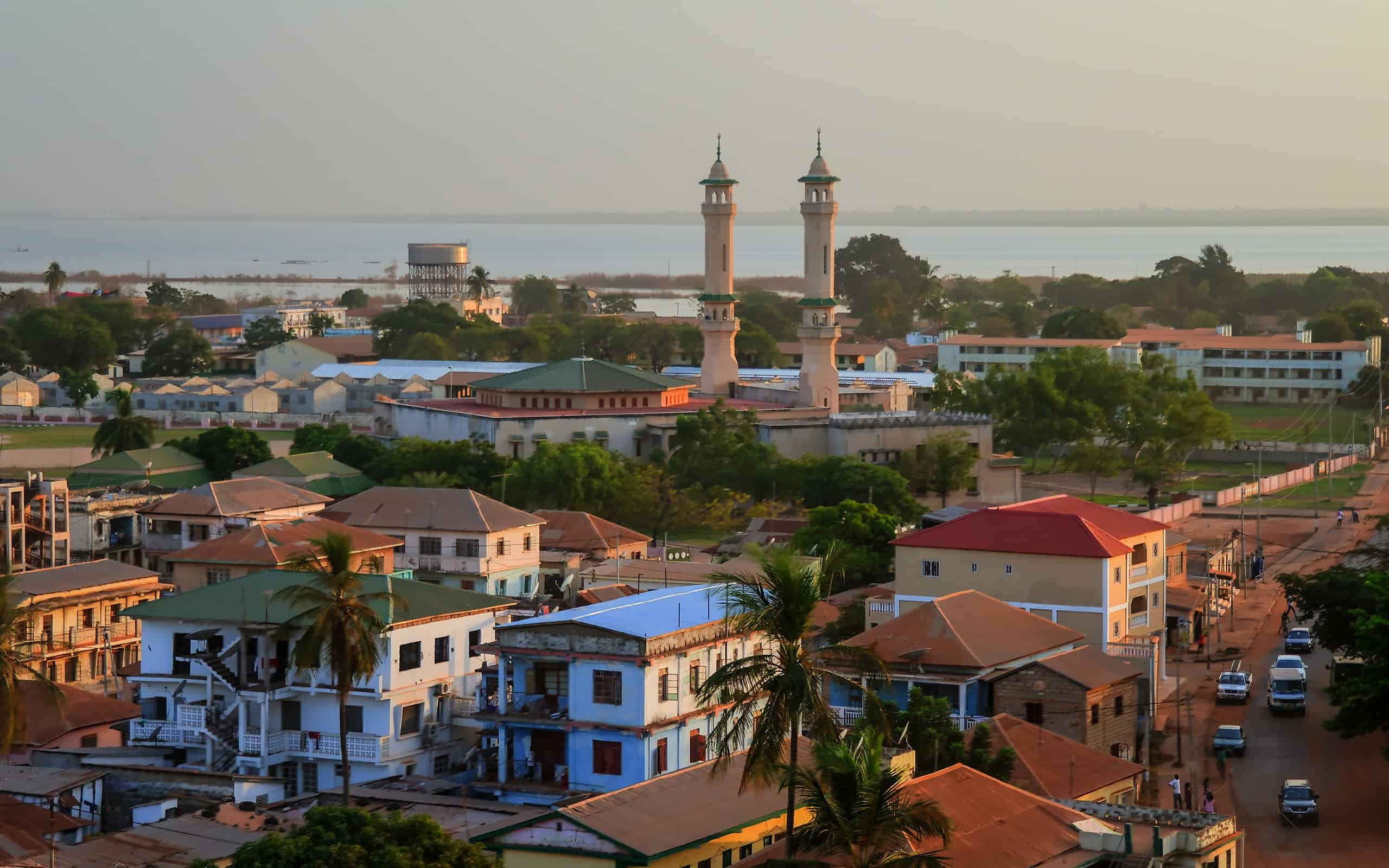
The Gambia River flows through the city of Banjul in The Gambia.
©HomoCosmicos/ via Getty Images
The Gambia is found on the western coast of Africa and is the smallest country on the whole African continent. In rural areas of The Gambia, over 70% of the people live in poverty. The country relies entirely on fishing, farming, and tourism to survive.
The Gambia is entirely surrounded by the larger Senegal on all sides except for the coastline. It is not considered to be at risk from ocean flooding or rising sea levels.
Republic of Estonia – 61 meters

The beautiful cityscape from the coast of Estonia in the summer.
©Oleksiy Mark/Shutterstock.com
Estonia is another small European country that borders Latvia and Russia. Estonia consists of a small mainland territory and over 2,200 small islands in the Baltic Sea. The land of Estonia has been inhabited by people by at least 9,000 BCE. The Estonian language dates back to the Middle Ages.
The name Estonia has its roots in the Aesti people that the Romans met in the area. Viking runestones also mention a land known as Eistland. The country was occupied by the Soviet Union for much of modern history. Yet, Estonia ranks highly on almost every development index including education, quality of life, and freedom of the press.
Senegal – 69 meters
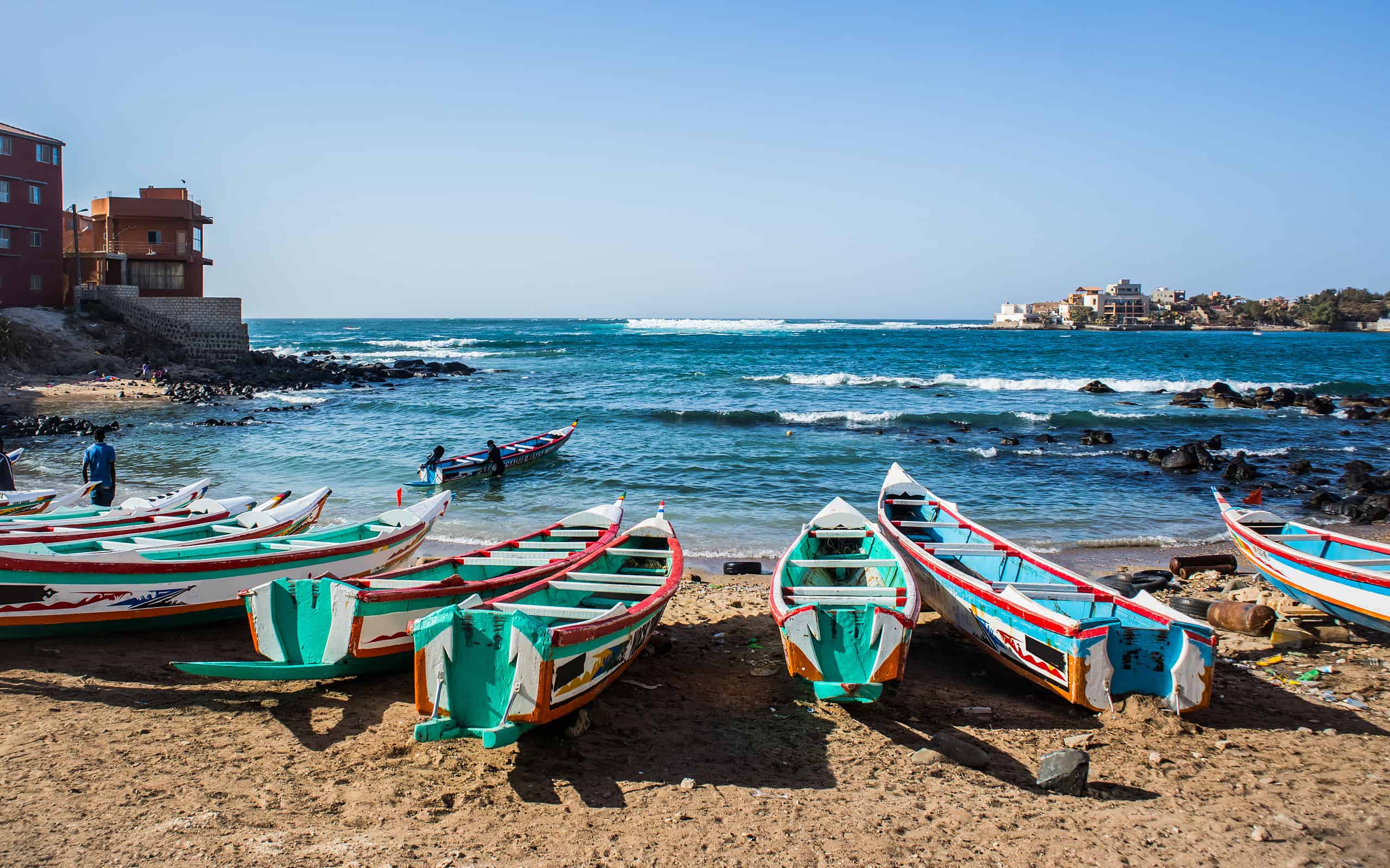
These fishing boats in Ngor Dakar, Senegal, are called pirogue, piragua, or piraga.
©Anze Furlan / psgtproductions/ via Getty Images
It would make sense that if The Gambia is on this list, then the country that surrounds it would also qualify. Senegal, like The Gambia, is heavily indebted and deeply impoverished. Centuries of colonization have largely stripped the country of its natural resources and human capital. Despite this, Senegal is slowly managing to improve its economic base by investing heavily in education. Senegal invests almost half of its entire budget into their education system.
The majority of Senegal is low, sandy plains and foothills. It gained its independence from France in 1960. It has been a peaceful country ever since its founding. They advocate passionately for more aid from rich countries to poor countries, especially those that struggle in the wake of colonialism.
Thank you for reading! Have some feedback for us? Contact the AZ Animals editorial team.

